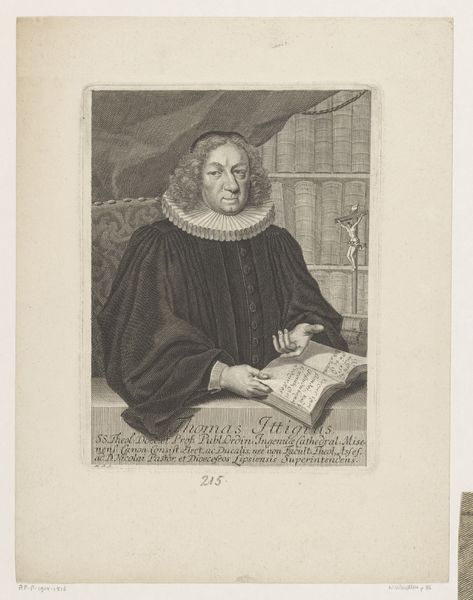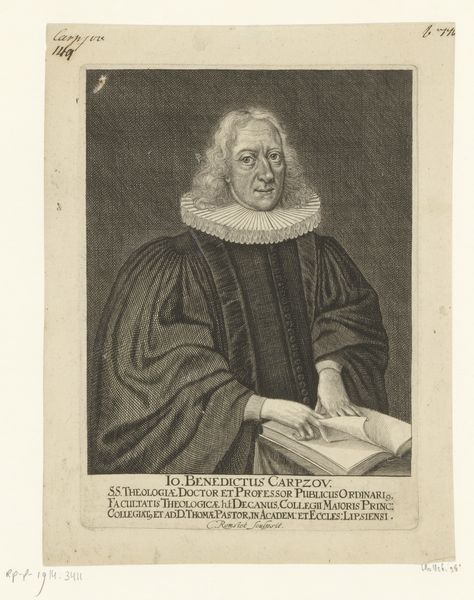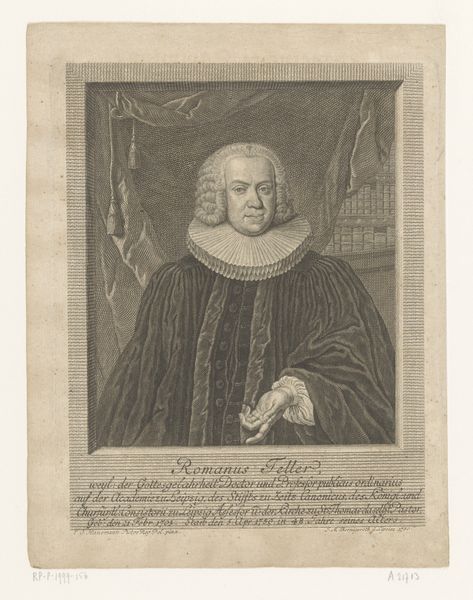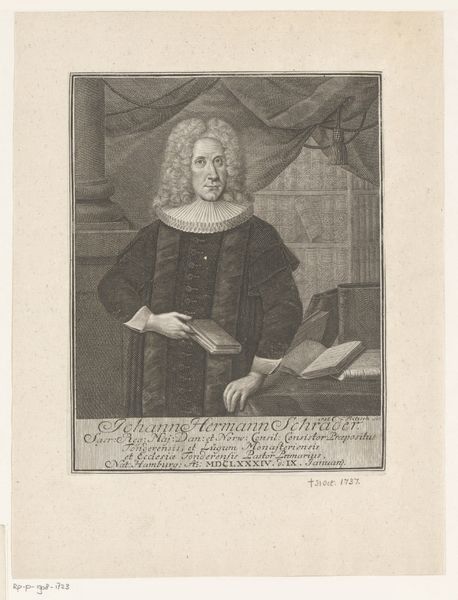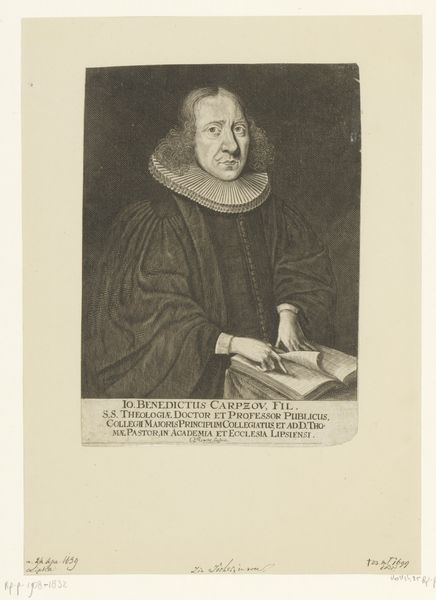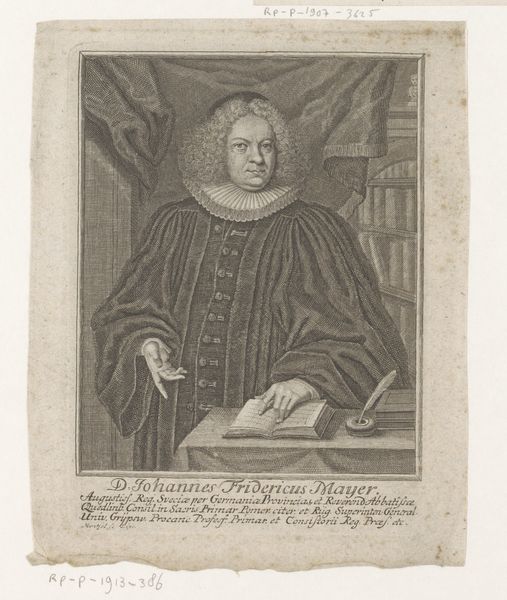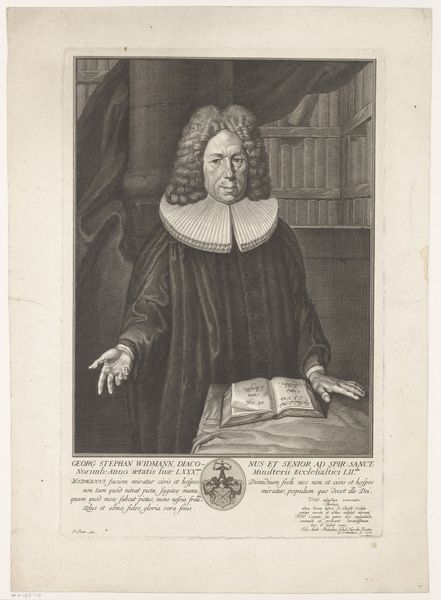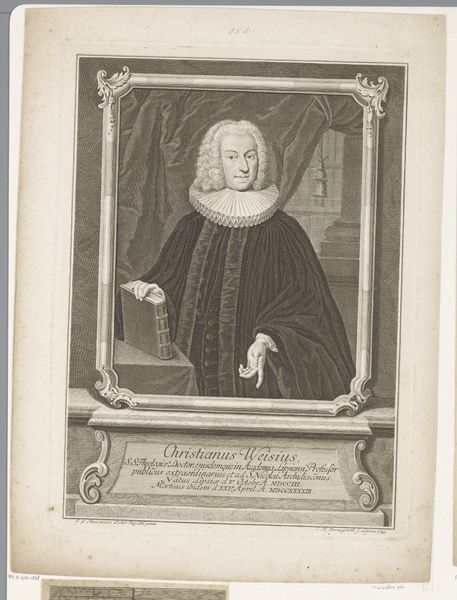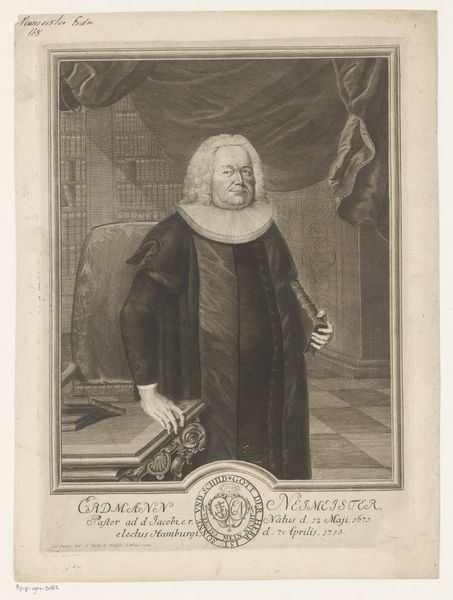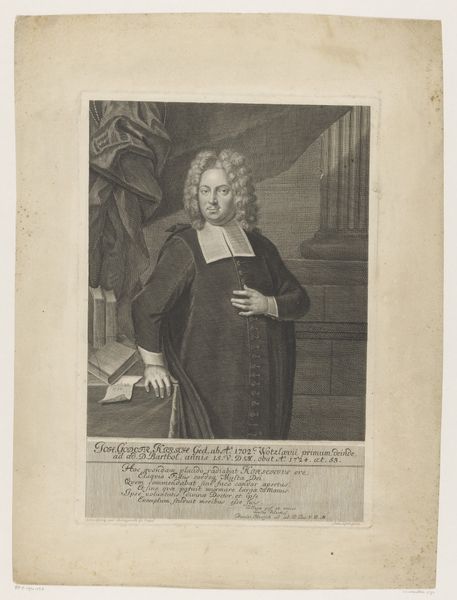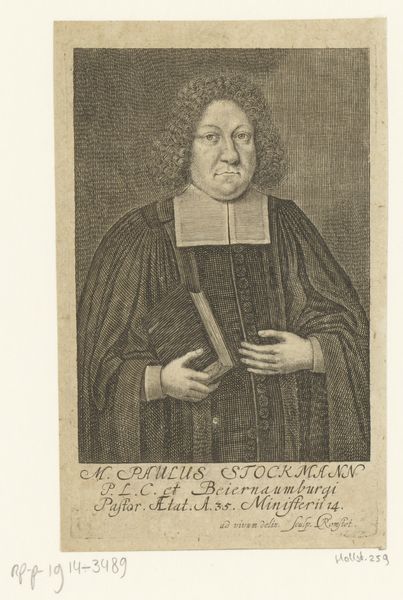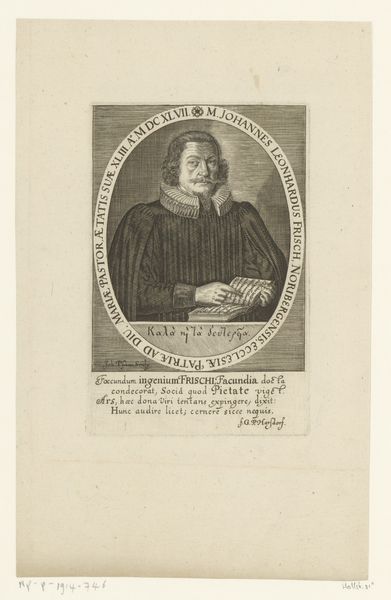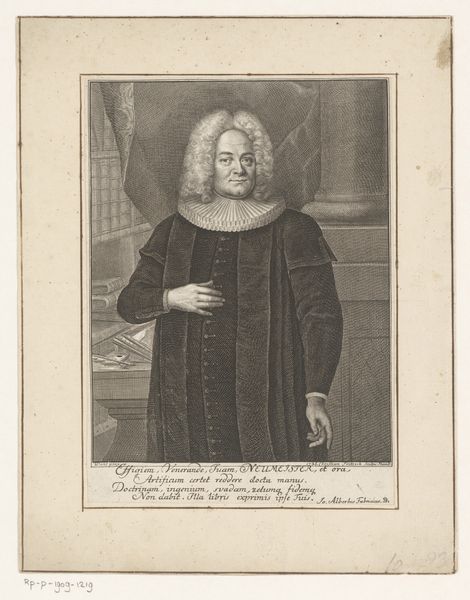
engraving
#
portrait
#
baroque
#
history-painting
#
engraving
#
realism
Dimensions: height 313 mm, width 235 mm
Copyright: Rijks Museum: Open Domain
Curator: Looking at this image, the first thing that strikes me is a sense of somberness. The dark clothing, the stern gaze…it speaks of a certain seriousness, wouldn’t you agree? Editor: Absolutely. This is an engraving, "Portret van Johann Baur op 46-jarige leeftijd," made in 1686 by Leonhard Heckenauer. Knowing that context of the late 17th century heightens that feeling. It suggests, to me, the kind of self-seriousness associated with men of power or spiritual authority. Curator: That tracks. Given his attire and the book before him, would we assume this Johann Baur was someone of religious significance in his community? And how does his very deliberate pose function within the culture and politics of the era? Editor: Precisely. The inscription identifies him as a Lutheran preacher and pastor in Augsburg. The portrait is staged with careful consideration. The draped curtain, the architectural column—these elements elevate Baur's status and evoke a sense of history-painting, lending an air of importance. We see realism employed, yes, but it's a curated realism. Curator: Curated is right. Even his finger pointing towards the open music book! I see that not only as indicative of religious office, but also perhaps reflecting larger societal structures surrounding literacy, learning, and who had access. Does that feel linked to Baroque notions of power and faith? Editor: Very much so. The Baroque period utilized grandeur to inspire awe and enforce hierarchical structures. Here, Baur isn't just a man; he's presented as an embodiment of religious and social order. How does this relate to contemporary dialogues surrounding the visual representation of spiritual and social leadership? Does an image such as this function any differently now, given the transformations in representation since the 17th century? Curator: That’s such an important point, because we tend to regard an image like this through a lens of our own ideological frameworks, often without considering the cultural context within which its meanings are rooted. Editor: Exactly! Considering the original social dynamics encoded into art is essential. Ultimately, that act enriches our perspectives. Curator: And understanding how an image once conveyed power and influence is incredibly illuminating. Thanks!
Comments
No comments
Be the first to comment and join the conversation on the ultimate creative platform.
